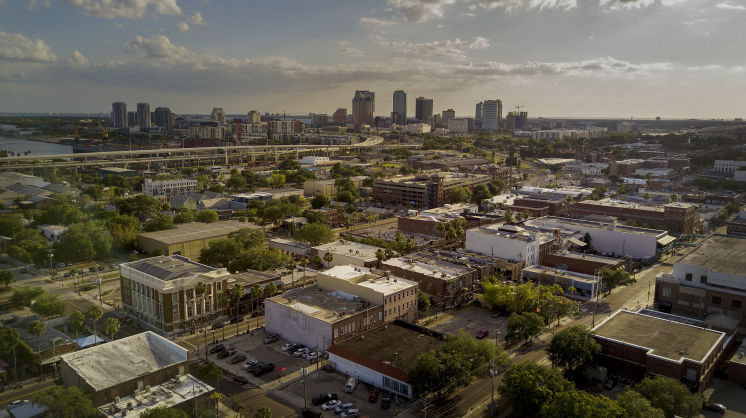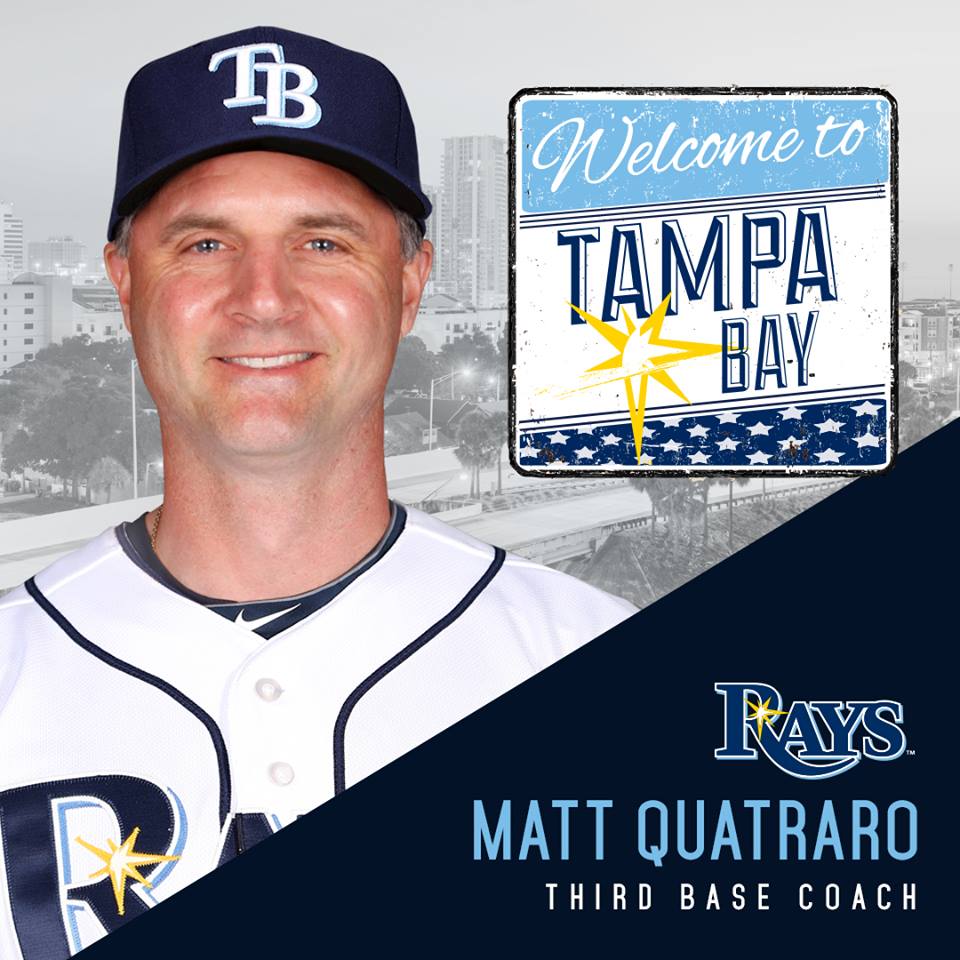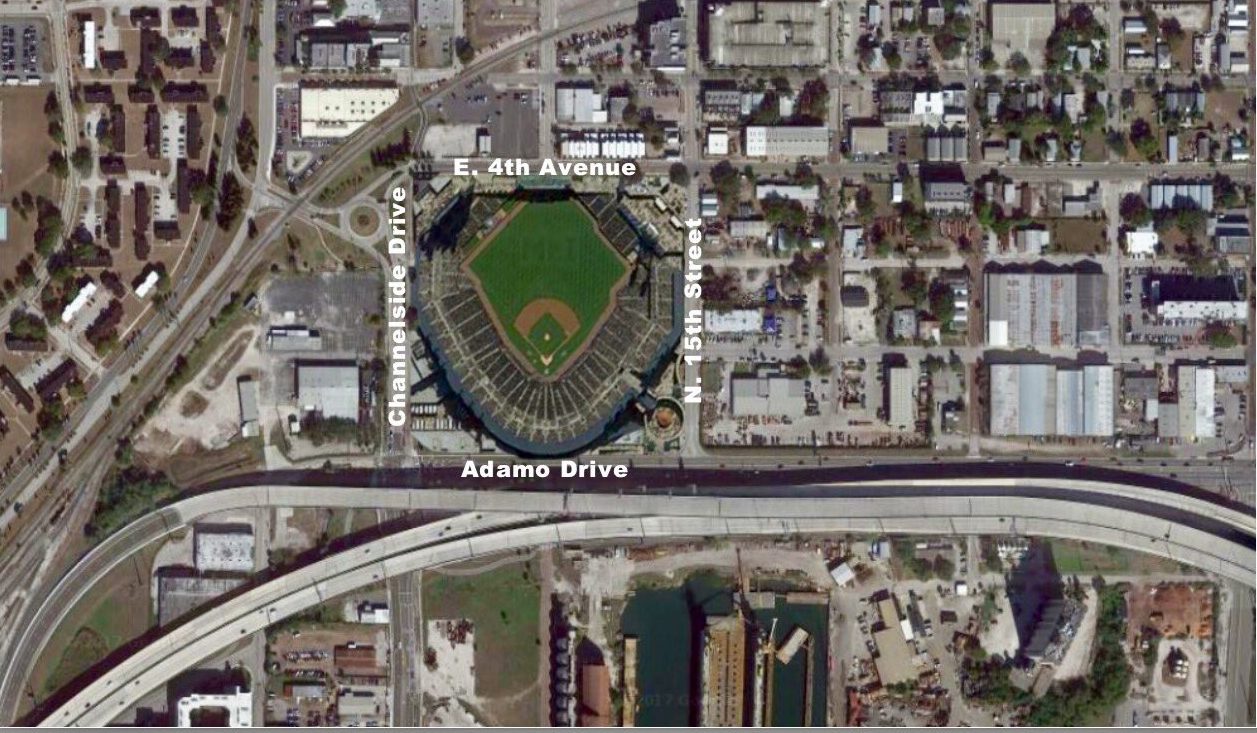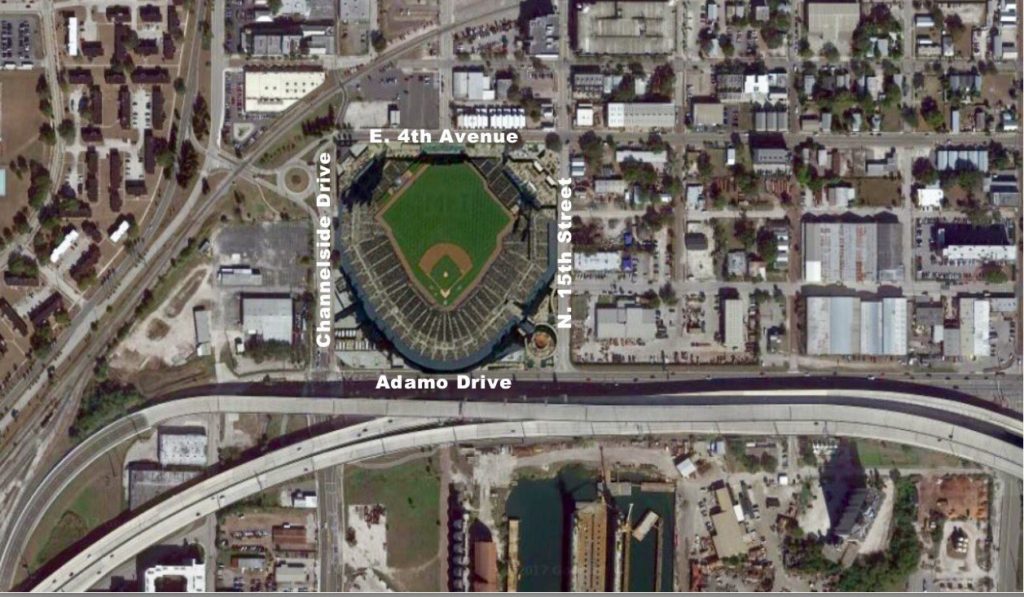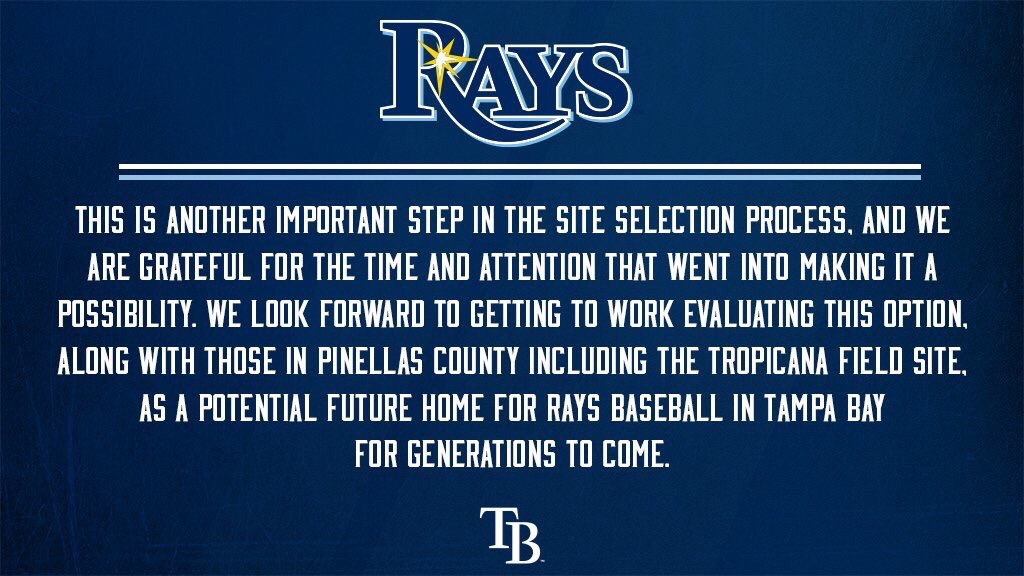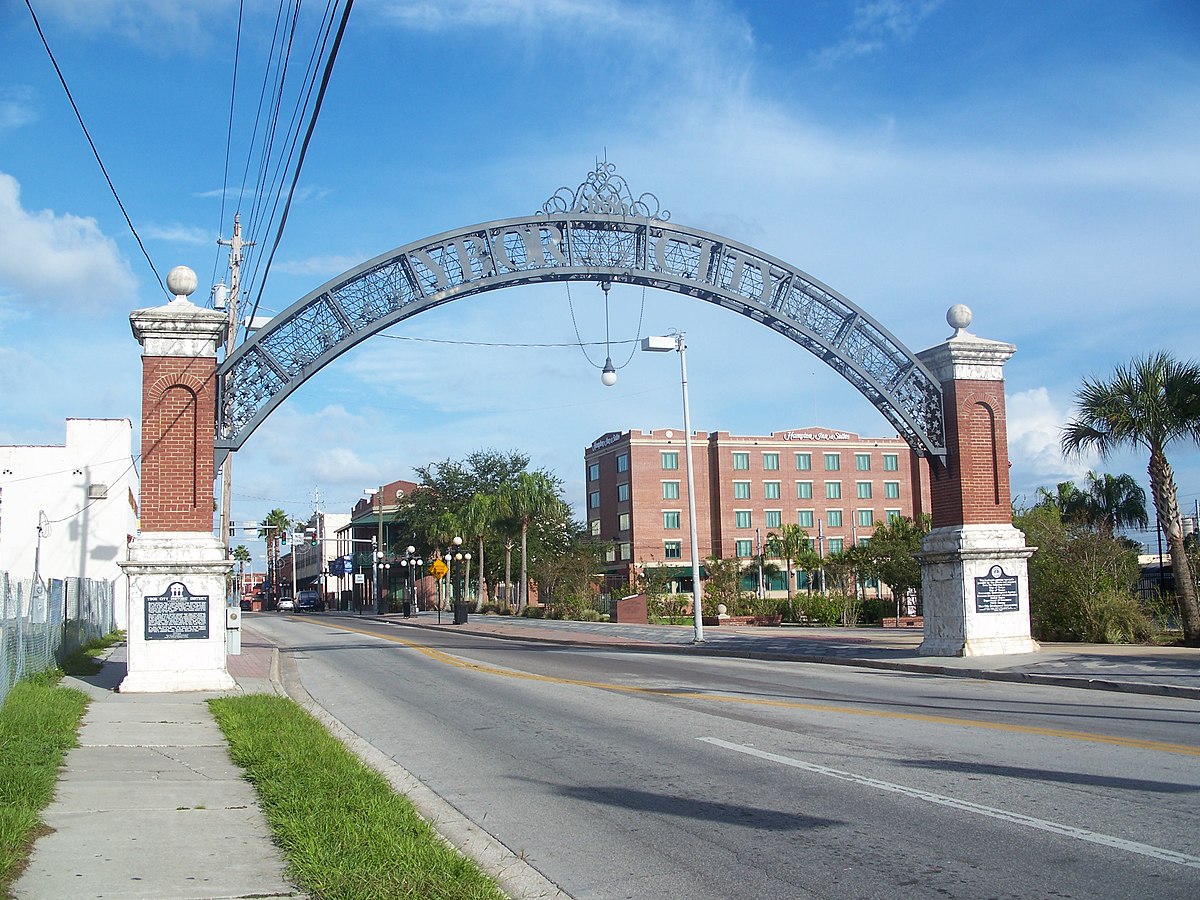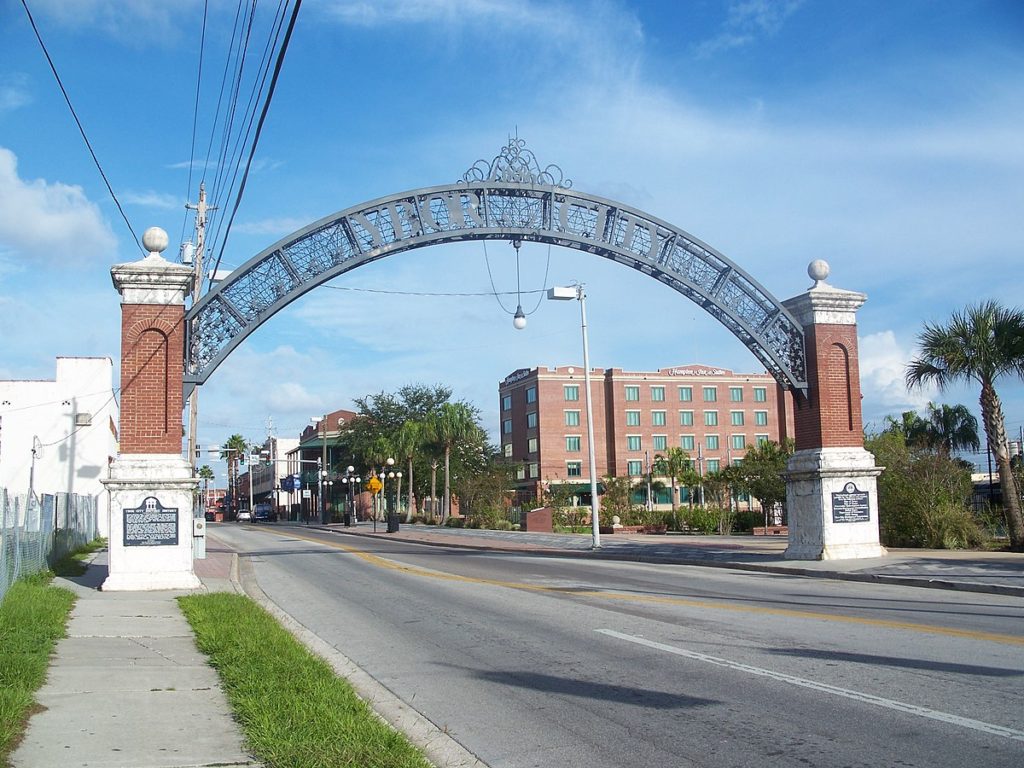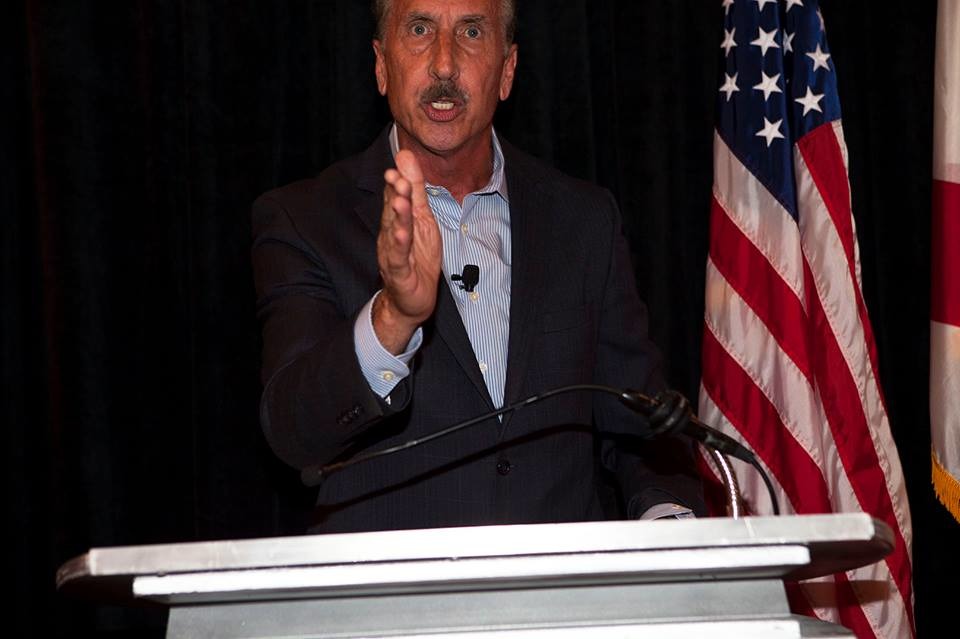
If you haven’t noticed, X-Rays Spex tends to eschew political discourse for the most part — after all, this is a baseball blog first and foremost. And while there have been glaring examples to the contrary since 2010, those of us who write for X-Rays Spex tend to put our political leanings on the back burner when we log into this WordPress powered blog.
There, however, comes a time when our tongues should not be silent, and this happens to be one of them. If you do not care to read about municipal politics, now would be a good time to visit another website.
On Sunday afternoon we — my partner, dog, and I — attended the second annual Open Streets Project event in downtown St. Petersburg. For those of you unfamiliar with the Open Streets Project, the premise is simple: close down a street (this year it was Central Avenue) provide public access to the roadway for active transportation, exploration and fun.
On our walk I saw St. Petersburg Mayor Rick Kriseman making his way west with a friend somewhere around Ferg’s. There were no cameramen or women, no bodyguards, nor an entourage … just the Mayor and a friend. We exchanged pleasantries in passing. This wasn’t the first time he and I have rubbed shoulders in public.
It is not uncommon to see Mayor Kriseman at “Everyday Joe” kinds of places, like a dog park or at a restaurant, away from the fanfare and stress of the job; places where he can let his hair down and just be a normal human being. Sure, his phone is always at the ready, although to be fair he is on call morning, noon and night. That comes with the job. I also have worked with Mr. Kriseman in a semi-official capacity, as I was personally asked to join the Baseball Forever campaign, the city’s initiative to keep the Rays in St. Petersburg. I am proud of the work that we did over the span of our campaign.
After Mr. Kriseman and I passed one another, something dawned on me: this wasn’t a normal situation, at least not normal as I perceive having grown up in St. Petersburg.
Until 2013 I never had the opportunity to share any space whatsoever with someone sitting in power. The were all distant apparitions that you read about in the newspaper or saw on TV, but never spoke to in an informal setting. No, Mayor Kriseman is different especially in comparison to his millionaire opponent, Rick Baker. I cannot remember a time when I’ve seen Mr. Baker under similar circumstances. And while that does not mean that Mr. Baker is out of touch with his former constituency, that he now feels the need for an image makeover to make him appealing to a younger set of voters is telling.
Let it be said and known, while I do not fall in lockstep on every issue with Mayor Kriseman — and in all honesty, everybody should be critical of any politician — there is no conceivable way that I will cast my vote for Mr. Baker.
To put it bluntly, Mr. Baker is a wolf in sheets clothing … a charlatan … a snake oil salesman.
Baker routinely panders to the African American community in St. Petersburg for votes. I cannot claim to be an expert on the African American community, however, I certainly can say that a millionaire, who doesn’t venture far beyond his own community, hasn’t a place to speak to the experience of living in a marginalized community, regardless of what that community might be. Mr. Baker lacks the frame of reference and doesn’t have the best interests of anyone who is middle class or poor in mind.
Thankfully an opinion writer for The Burg Votes, a local blog, eloquently listed Mr. Baker’s negative impacts on the African American community:
He’s has taken credit for public school successes in the past, but cannot point to instances during the past eight years that demonstrate that he remained committed to our students, parents, staff, or schools.
He expressed dismay regarding the closing of grocery stores, when in fact most of his commercial projects in Midtown either shutdown or struggle to this day because he failed to focus on increasing employment and income in the area.
When the going got financially tough toward the end of his term, Baker slashed Summer Youth Employment funding to $30,000 (2007-08), a far cry from the vibrant levels advocated by myself and peers on city council, and the lowest level ever in two decades tracking of the program.
Yes, the Manhattan Casino was renovated with federal funds under his watch, but Rick Baker left the facility vacant as he and his Deputy Mayor of Midtown refused to negotiate an agreement with anyone. The building remained empty until his successor, Mayor Bill Foster, opened the venue for community use.
The Grogan property across the street, EMPTY under his watch; the building where McCall’s had a restaurant next to the Royal Theater, EMPTY and then condemned; the Old Hardens Grocery store now Chief Creole Café, EMPTY until after Baker left office; the building that now occupies Gallery 909 and a former Barbecue Restaurant, also EMPTY during his terms.
The operative word here is EMPTY, all as the 22nd Street Main Street initiative was left by Baker to fend for itself, while the red carpet was rolled out for businesses and development Downtown.
Further, notice that Baker did not mention during his last debate his prior claim that he opened a Post Office in Midtown. This may be because well respected members of the Felton family (owners of the property that is leased by the U.S. Postal Service) were incensed by his claim, which is yet another negation of African American history, as a post office facility existed prior to Baker’s intervention.
And even Downtown, Baker’s record is less than stellar when it comes to African Americans
Witness his abrogation of the rights of citizens when closing off the public right of way to protesters of the former Baywalk plaza.
Witness the number of businesses that vacated Bay Walk on his watch, with barely a mention of the plaza’s failure in current media coverage.
Witness that the unacceptable practice of targeting persons of color and asking them to leave Sundial (specifically the theater) has continued at what is now Sundial. Why is that Rick Baker?
Also witness, Baker’s mention of City subsidies during the televised debate and take note that the City has consistently provided a subsidy to the Mahaffey Theater, a venue managed by the Edwards Group with Baker at the helm.
Notice too, Baker’s claims of diversity aren’t all that he would have you think
What was also absent from Baker’s dialogue during the televised BayNews9 debate were the accolades he heaps upon Goliath Davis when speaking in the African American community. Did he forget to tell the greater audience how wonderful Davis was to his administration or are those glowing compliments of his efforts reserved for the African American community ONLY?
While Baker and his black backers tout his promotion of African Americans into management positions, kudos to him, but Kriseman has actually done more in that regard.
And when it comes to the future….
Be mindful that the practice of lowering the Black History flag is the ONLY thing Baker has intimated that he would reverse. What about all the issues he has yet to address about the future of our city, of our community, such as climate change, healthcare for all, the assault and underfunding of public education, automatic restoration of rights, the Fight for $15.00……and why he supported Rick Scott, Sarah Palin, Mitt Romney, Herman Cain, and (he won’t say) Donald Trump.
On Friday Mr. Baker thoughtlessly re-appropriated African American culture in an incredibly tone-deaf — and dare I say blatantly racist — advertisement on his Facebook campaign page which he later deleted.
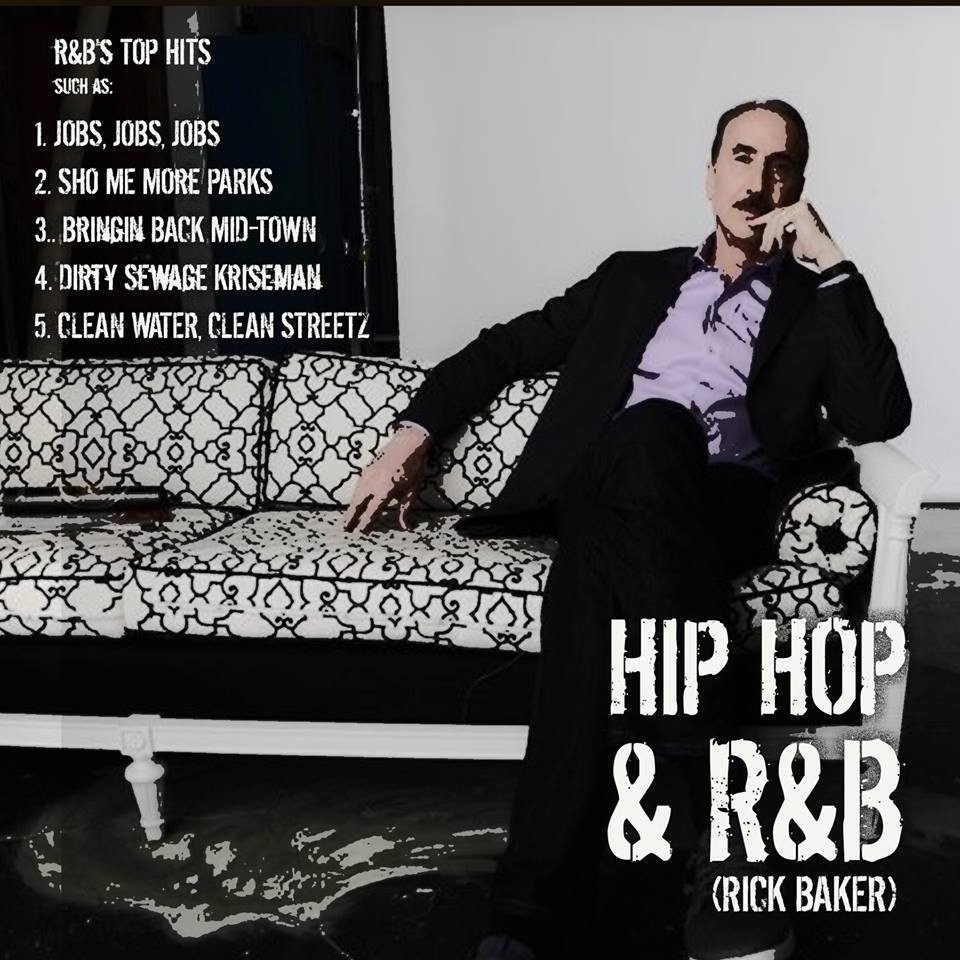
I’m still awaiting the Tampa Bay Times’ story on this, his (as of now) second altered, redacted, or deleted advertisement. The Times endorsed Mr. Baker’s campaign, and the silence on their part should come as tacit complicity.
I know it was discussed. I was tied up on 3 other stories.
— Charlie Frago (@CharlieFrago) October 29, 2017
Thankfully one publication, Creative Loafing, has tried to hold Mr. Baker accountable for his actions. As of Friday they reached out to Mr. Baker’s campaign to make sure it wasn’t hacked by a jokester or if the screenshot is the work of some expert photoshop troll, but they’ve yet to hear back.
For his part, Mr. Baker has yet to publish a statement on the matter, nor has he apologized to the African-American community … hell, to anyone with half a brain or even the slightest moral compass.
The former mayor’s negative campaign tactics have grown tiresome, as has his political grandstanding (heck, the Florida GOP’s for that matter) in the ongoing “sewer crisis,” which was partially the former Mayor’s fault in the first place.
Or as council member Charlie Gerdes put it via his Facebook page:
If you read the FWC Final Report on the sewer discharges you will find it states the following:
1. “By the end of Hurricane Hermine the City of St. Petersburg was responsible for 51% of the SSO’s (illegal discharges) in the State of Florida for 2016. These should be considered willful and negligent acts that could have been avoided or at least significantly mitigated, had the City taken action 20 years ago.” TAKEN ACTION 20 YEARS AGO!
2. “Proactive actions that could have prevented the current problems include, but are not limited to, the following: construction of a replacement plant for Albert Whitted outside the flood zone; increasing the processing capacity of all their plants (this is already being done at SW and NW); Begin aggressive collection system replacement; Seek clean water act state revolving funds for theses projects.” REPLACE ALBERT WHITTED PLANT ON SITE OUT OF THE FLOOD ZONE.
3. “The in house capacity analysis of the NW plant was incomplete. The report omitted the fact that the #2 clarifier was nonfunctional from 2007 -March 2017 and 2 Aerators nonfunctional from December 2008 through May 2017.” NONFUNCTIONAL EQUIPMENT SINCE 2007-2008
4. In 2005, “FDEP also required that every wastewater plant that used injection wells, also have storage capacity that shall be the volume equal to one day flow at the average daily design flow of the treatment plant as defined in 62-610.464(3), Florida Administrative Code (F.A.C.) . . . The Albert Whitted plant never came into compliance with subsection 62-610.464(3) F.A.C., even until its closing in April 2015. . . . [Regulatory Inspector Jeff] Greenwall advised in his interview that Albert Whitted was unable to come into compliance. There was no physical space for a storage tank to meet the requirement.” THE ALBERT WHITTED PLANT SITE CANNOT COMPLY WITH STATE LAW.
5. “The option was available after the discharges of 2015 to quickly restart the Albert Whitted plant. The choice was made not to restart it. There are many conflicting opinions about the exact timetable and cost of restarting the [Albert Whitted] plant. But what is not contestable, is the fact that an operational Albert Whitted would have significantly mitigated the discharges from SW and Albert Whitted.” TIMETABLE AND COST? HOW ABOUT THE FACT THAT THE PLANT WAS NOT IN COMPLIANCE WITH STATE LAW AND COULD NEVER BE IN COMPLIANCE BECAUSE THERE IS NO ROOM TO BUILD A 12 MILLION GALLON TANK AND YOU STATE A REPLACEMENT PLANT SHOULD BE CONSTRUCTED OUT OF THE FLOOD ZONE. GOOD IDEA!
6. “Influx and Infiltration (I &I) of stormwater into the sanitary sewer system is a major problem in the City. The City has a system that is old and in disrepair. Based on investigative research this problem was identified 20 years ago by FDEP and the City references the I & I as a main reason for the high water flows into the wastewater plants during rain events and subsequently blamed for the discharges. . . . In an interview with the manager of the collection system, Lane Longley, he stated that very little work was actually performed to fix the I & I violations. Most work was done to repair the structure of the main lines and man holes.” OUR SEWER COLLECTION SYSTEM LEAKS LIKE A SIEVE. THAT PROBLEM BEGAN LONG BEFORE 2014 AND IT WILL TAKE SEVERAL YEARS TO GET IT UNDER CONTROL. THAT WORK WAS BEGUN LAST YEAR.
7. “In 2000, FDEP executed Consent Order 97-0134. The Consent Order was in response to multiple illegal discharges in the 1990″s. I & I was identified as the culprit. The Consent Order had an effective time of 10 years to allow the City time to fix the I & I violations. The Consent Order was closed in 2010 because the City convinced FDEP that the I & I system had been repaired. Soon after, City management realized that the system had not been fixed. . . . I & I is a known and documented problem from the 1990’s. The exact amount of money spent in repairs to the I &I system since the 1990’s is known and documented. The manager over the repairs to this system and engineering companies commissioned by the City advised what would be required to fix the system. Few of the recommendations were done and the required amount of money was not invested.” THIS IS THE PART OF THE REPORT THAT SHOULD BE MOST IMPORTANT. ALBERT WHITTED IS NOT THE ANSWER TO OUR SEWER SYSTEM PROBLEMS. A COMPLIANT PLANT CANNOT BE OPERATED ON THAT PROPERTY. EFFECTIVELY REDUCING I & I IS THE SOLUTION. THAT IS WHAT IS OCCURRING NOW.
Let’s move forward.
According to Peter Schorsch (Saintpetersblog), Baker has reloaded for the general election with contributions from Rick Scott and Adam Putnam, among other.
Scott wrote Baker’s PAC a $25,000 check, while other Tallahassee Republicans have contributed more than $300,000 to his PAC. That is on top of Steve Wynn’s (Las Vegas casino magnate) $25,000 campaign contribution.
The Seamless Florida PAC, which has been widely reported as aligned with Baker, raised $214,750 in August, the finance report shows, writes Schorsch. Of that total, $25,000 came from the Let’s Get to Work political committee, which is linked to Scott, and $25,000 came from the Florida Grown political committee, which is linked to Putnam.
Also, $50,000 came from the Conservative Principles for Florida political committee, which is led by Oliva, who will become House speaker in November 2018.
Another $45,000 came from the Liberty Florida political committee, which is linked to Sen. Jeff Brandes the report shows.
Personally, I find it reprehensible that Baker, in any capacity, would accept donations from someone like Wynn, who has no identifiable connection to St. Petersburg. What motive would Wynn have to contribute money to a mayoral candidate in a small city some 2,346 miles away? Does he expect something in return … a quid pro quo as it were?
But wait, there’s more! Mr. Baker’s family defrauded the US military in the 1990s, which was written about by John F. Sugg in Creative Loafing in 2001:
A decade ago, Rick Baker’s father and two brothers were convicted in a federal case of defrauding the U.S. military in the sale of aircraft turbine blades and other sensitive parts. Instead of using “virgin” alloy, the Baker family-controlled company, Aerodyne Investment Castings Inc., substituted scrap metal.
Baker’s father, Russell K. Baker of Odessa, confessed to a minor offense, served a brief period of house arrest and paid a $75,000 fine. The brothers, Russell Jr. and Roger, were convicted of multiple counts, including mail fraud and money laundering, and each was jailed for more than a year. The scandal was widely reported in the media, including numerous stories in the Times.
On April 11, two days after the Planet‘s letter inquiring about Aerodyne was faxed to Tash, the Times for the first time reported Rick Baker’s family had been involved in the scandal.
Rick Baker’s name never came up during the Aerodyne trial, to be sure, but when the Times wants to find out about someone, the degree of effort seems to depend on whether the newspaper likes the person. For example, in the pre-election candidate profiles, the Times dug back in Ford’s past to her high school days, looking for critics. Baker’s history in the Times, by comparison, is little more than a recounting of his own resume; no deep probing is evident.
In the April 11 article, the Times stated that it didn’t mention Aerodyne in Baker stories because it had learned of the issue only via e-mail the night before the March 27 election. That was “too late to verify and publish before the election,” the article stated and then added a quote by Tash: “We don’t want the newspaper to be used.”
The Planet obtained a copy of the e-mail sent to the Times. It was dispatched to the newspaper’s city desk at 9:29:07 a.m. on Saturday, March 24 — three days before the election. The Times refers to the author of the e-mail as “anonymous,” but the Planet was able to identify and locate him. He confirmed the e-mail was sent Saturday morning.
That would have given the Times more than sufficient time to, as the e-mail suggested with great specificity: “Check your archives: Business Section, July 9, 1989. A story written by Marlene Sokol. Aerodyne Castings, a Tampa defense contractor, was accused and later found guilty of fraud against the government. Running that company was Russell K. Baker, Russell K Baker Jr. and Roger Baker — father and two brothers of Rick Baker.”
[page]
In the April 11 Times article, Rick Baker denied any involvement with Aerodyne, other than working as a sandblaster for the company one summer, and later as a lawyer handling some minor real estate transactions.
The Times apparently did not investigate further or chose not to report what is easily found in the Florida Secretary of State’s online database.
The Planet‘s search revealed that Baker did have an involvement with an apparently related company, North American Castparts Inc. Rick Baker and his law firm, Fisher & Sauls, are listed as the registered agent of North American. “Registered agent” is a post that may or may not signify substantial involvement with a company.
North American’s president was Rick Baker’s father, Russell. Listed among directors are Medard Cronin and David Janney — both are also listed on Aerodyne’s corporate records. Cronin and Janney were not indicted with the members of the Baker family.
North American was an active company during the mid-1980s, when the illegal activities at Aerodyne occurred. Rick Baker resigned as registered agent in November 1986, before the indictments.
Tash did not respond to numerous follow-up inquiries, including an April 17 letter, as to what the Times knew about Baker and Aerodyne and when the newspaper knew it. After the Planet initially asked about Baker, the Times dispatched a reporter to Georgia to search through the federal government’s records on Aerodyne.
The Times reporter who covered Baker and wrote the April 11 article, Bryan Gilmer, maintained that he first heard of the e-mail the evening before the election. Staffers inside the Times told the Planet that they believe Tash was truthful in the April 11 article, but that he had not been correctly informed by subeditors as to when the e-mail arrived.
It’s common for politicians and their supporters to launch 11th-hour sneak attacks against opponents. Newspapers often are cautious in handling such matters unless there is a chance for the target of an attack to respond. However, the Planet has spoken with the originator of the e-mail regarding Baker, and he was not a Ford supporter or even a Pinellas resident. In any event, the history of Baker’s family is not disputed — only unreported by the Times.
Times insiders also said that columnist Mary Jo Melone, who on April 12 wrote an article reflecting on the previous day’s story, wanted to comment earlier and more harshly, but had been deterred by the newspaper’s managers. Melone’s column put all of the blame for Baker’s mendacity by omission on the mayor. She leveled no rebuke at her newspaper for not digging into Baker’s history. Melone did not respond to several detailed phone calls.
None of the Baker family could be contacted. Rick Baker responded to a request for an interview by having GOP political operative Goodman return a phone call. Goodman said he knew no details of the Aerodyne affair, nor did he know about Fisher & Sauls’ work for the Times and Poynter.
Now the big questions are these: What’s Rick Baker’s administration going to do to spruce up the neighborhoods, including Bartlett Park, that surround the Poynter Institute? Or how many taxpayer dollars will Baker be willing to spend on a new stadium in order to keep the up-for-sale Devil Rays, which are marketing partners with the Times, from moving?
These are but a few reasons that I will not be casting a ballot for Mr. Baker, who already represented the city for eight years. There certainly are many, many other reasons to steer clear of Mr. Baker. He never should have been Mayor in the early aughts, nor should he win the position again next Tuesday.

